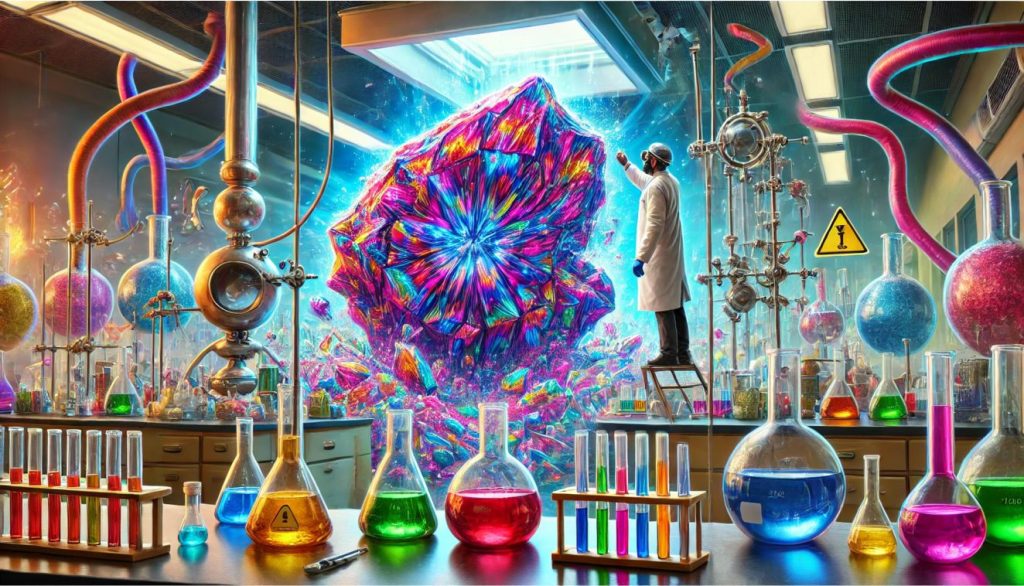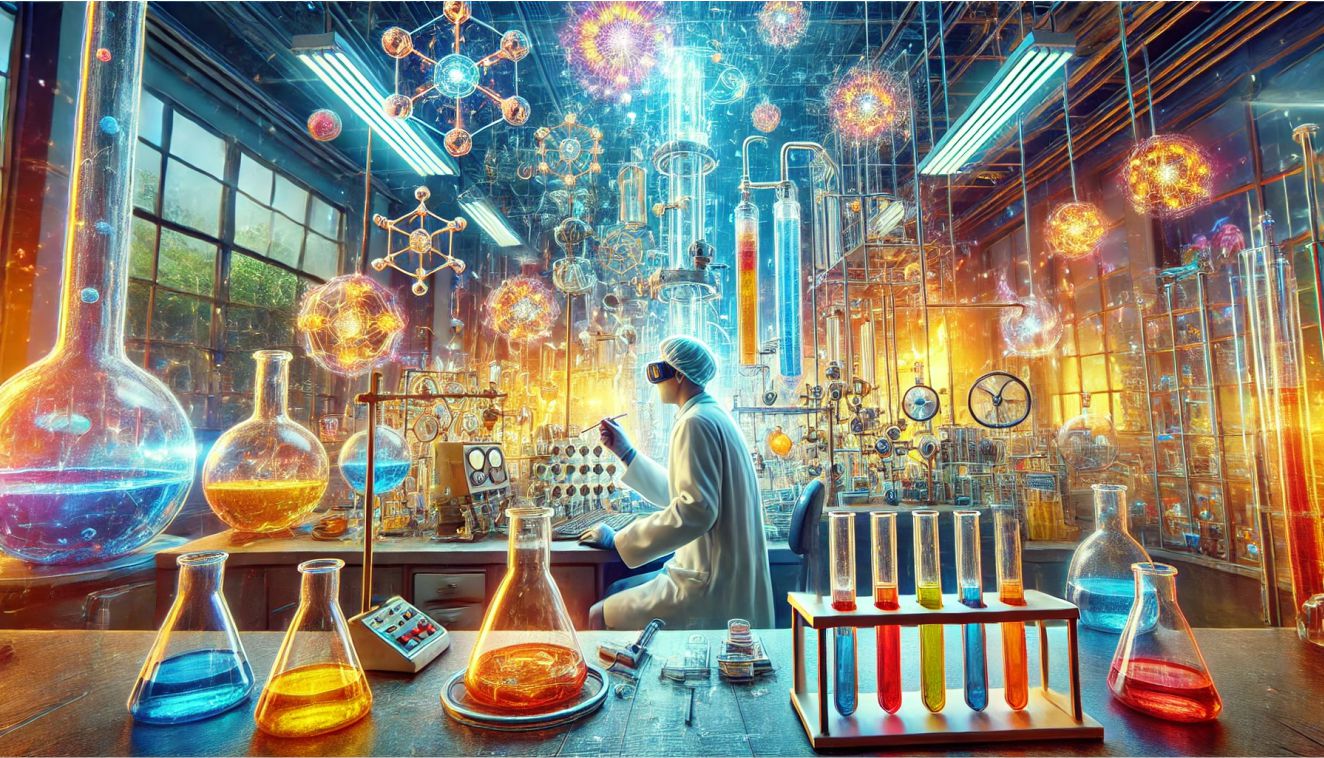Dimethyltryptamine (DMT) is a powerful substance that can change how you think and feel. It’s found in some plants and animals. DMT extraction is a method used to get the substance out of its natural sources. Now, that’s a super important process because it helps us understand DMT better, especially for their medicinal and research uses.
The Basics of DMT Extraction Explained
Amazonian botanical medicine ayahuasca, which contains DMT, is a significant focus in pharmacological research and clinical investigations due to its therapeutic potential and effects on various health conditions.
Plants Containing DMT
DMT is found in a variety of plants, often in combination with other psychoactive compounds. Here are some notable examples:
- Mimosa hostilis: commonly known as jurema or tepezcohuite, mimosa hostilis a source of DMT.
- Chacruna: A plant used in the preparation of ayahuasca, a traditional South American brew.
- Cebil and Yopo: The plants contain DMT and are used in traditional snuffs.
- Acacia species: Some acacia trees contain DMT.
- Phalaris arundinacea: The grass contains DMT, but extraction is complex and dangerous.
Animals Containing DMT
While less common than in plants, DMT has been found in some animals:
- Certain frog species: Some frogs in the Amazon rainforest contain DMT-like compounds.
Important Note: The presence of DMT in animals is a complex topic with ongoing research. The information available is limited and should be treated with caution.
What is DMT Extraction?

DMT extraction means removing DMT from plants or other materials. The most common plant used is Mimosa tenuiflora. The plant has a high DMT content, which is why it is often chosen. The process involves several steps to make sure that DMT is collected in its purest form.
How is DMT Extraction Done?
Now what and what do we do to get DMT out the right way?
Step 1: Preparation
To start DMT extraction, you first need the plant material. For example, Mimosa tenuiflora is crushed into a powder, to release the DMT from the plant’s cells.
Step 2: Using Organic Solvents
After preparing the plant, the next step is to mix it with a liquid that dissolves DMT. Common organic solvents include ethyl acetate, methanol, and sodium carbonate — solvents that help separate DMT from the plant material.
Step 3: Filtering and Evaporation
Once the solvent has mixed with the plant, the liquid is filtered to remove solid parts. The liquid containing DMT is then evaporated, leaving behind a more concentrated form of DMT.
Step 4: Purification
The concentrated DMT might still have other substances mixed in. To make it purer, more steps are taken, often involving more solvents and careful techniques.
How DMT Extraction Works
DMT extraction is how scientists get DMT from plants. The process helps us study DMT and understand it better. Let’s break down how that works in a very simple way.
Using Solvents
In DMT extraction, we use special liquids called solvents such as ethyl acetate and methanol, to separate DMT from the plant it comes from.
Traditional liquid-liquid extraction methods have historically been significant in extracting indole alkaloids, particularly N,N-dimethyltryptamine, from various plant matrices. These methods were crucial in the preparation of ayahuasca tea and previous analytical techniques.
Imagine you have a sponge soaked with colored water. To get the color out, you use a clean liquid to wash it. The solvent works like that clean liquid, helping to pull out DMT from the plant. Each solvent has its own job and works best at different steps.
Why Solvents Are Important
Solvents matter because they help us get pure DMT. If we didn’t use them, DMT would be mixed with other stuff from the plant. Using the right solvent makes sure we get a lot of DMT and less of unwanted substances.
How We Check DMT
Mass Spectrometry
Mass spectrometry, using a mass spectrometer, is a tool that helps us see how much DMT is in a sample. Think of it like a very precise scale. It weighs tiny pieces of the sample and tells us what they are.
That method helps us find out the exact amount of DMT present. It’s like measuring how much sugar is in a jar, but much more detailed.
Gas Chromatography
Gas chromatography (GC) is another tool used to check DMT. It works by separating different parts of a mixture. Imagine a toy that sorts colored beads into different piles. GC does something similar by sorting the different substances in a sample.
Using Both Methods
Sometimes, we use both mass spectrometry and gas chromatography together. That’s like using two different kinds of tools to get the best results. Combining them gives us a clearer picture of the DMT concentration and purity.
Testing DMT in Humans
Checking in Urine and Plasma
Scientists also test DMT in human urine and human plasma. Urine is the liquid you pee out, and plasma is a part of your blood. Testing helps us see how DMT moves through and stays in the body.
Human pharmacology is crucial in understanding the effects of DMT on human subjects, including its pharmacokinetics and the excretion of monoamine metabolites.
That information is important because it helps us understand if DMT is traceable through a drug test. It also tells us how long DMT stays in the body and how it interacts with other substances.
Why Testing Matters
Testing DMT in urine and plasma helps us learn about its effects on people. It shows how much DMT is in the body and if it stays there for a long time. The information helps make sure that DMT is used safely.
DMT and Canadian Law
In Canada, DMT is currently illegal, but the law is not strictly enforced. Here’s what that means: you might see hallucinogenic stores that sell DMT in some cities. The stores are not being shut down right now, but that could change in the future.
We at Hallucinogenics are based in Ontario, and ship only to Canadian addresses. However, we make sure to follow all current rules and regulations for shipping while providing you with the best trips when you need them.
FAQs
How do scientists check DMT in a sample?
Scientists use tools like mass spectrometry and gas chromatography. Mass spectrometry measures the exact amount of DMT, while gas chromatography separates DMT from other substances to show its concentration.
Can DMT be detected in urine or plasma?
Yes, DMT may be detected in human urine and plasma. Oral dosing affects the measurement of DMT in human plasma, as it influences the absorption and concentration of the compound. Testing samples helps understand how DMT stays in the body and if it is detectable in drug tests.
What is the legal status of DMT in Canada?
In Canada, DMT is illegal, but the law is not strictly enforced. That means that while DMT is not actively prosecuted, it is still considered illegal. Hallucinogenics follows all current rules for shipping within Canada.
Why is it important to test DMT in the body?
Testing DMT in urine and plasma is important to understand how it affects the body and how long it stays in the system.
What tools are used to test DMT concentration?
Mass spectrometry and gas chromatography are the main tools used to test DMT concentration. The tools provide detailed information about the amount and purity of DMT in a sample.
How does mass spectrometry work?
Mass spectrometry is like a super accurate scale for measuring tiny amounts of substances. It helps scientists see exactly how much DMT is in a sample.



